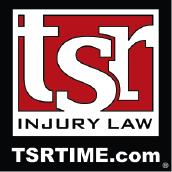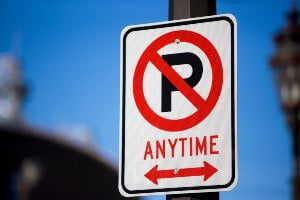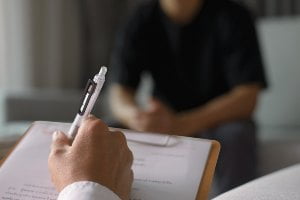How Negligent Drivers Can Cause Rollover Car Crashes in Minnesota
 The impact from a rollover crash often causes the roof of the vehicle to cave in. For the driver and other occupants, this type of collision is likely to result in catastrophic or fatal injuries.
The impact from a rollover crash often causes the roof of the vehicle to cave in. For the driver and other occupants, this type of collision is likely to result in catastrophic or fatal injuries.
While there are numerous factors that can contribute to a rollover crash, the main culprit in these crashes is driver negligence. For this reason, victims are urged to meet with a licensed attorney to discuss legal options.
At TSR Injury Law, we know how devastating a rollover crash can be and we are prepared to help victims, at no upfront cost. Our Minneapolis vehicle accident lawyers have obtained millions for crash victims.
Call today to set up your free legal consultation: (612) TSR-TIME.
What is a Rollover Crash?
A rollover crash occurs when a vehicle either rolls over onto its side or flips upside down. Sometimes vehicles stop rolling when they hit the pavement. However, if a vehicle is traveling at a significant speed, it may rollover two or more times before coming to rest.
Sometimes a rollover crash involves two or more vehicles. However, rollover crashes are often single-vehicle crashes where the driver made a dangerous maneuver that caused the vehicle to roll. While single-vehicle rollovers are incredibly dangerous, the risk of a death goes up significantly when more than one vehicle is involved.
How Do Cars Flip Over in a Crash?
Rollover crashes can be divided into two main categories: untripped rollovers and tripped rollovers.
Tripped Rollover Crashes
This is the most common type of rollover crash and occurs when one of the vehicle’s tires digs into soft ground or hits a curb, ditch, guardrail or median. This creates a sudden increase in lateral force, causing the weight of the vehicle to shift to one side, creating the potential to roll the vehicle before regaining control.
A tripped rollover often happens after a collision with another vehicle. The impact could push one vehicle off the road and cause the wheels to hit something that shifts the weight of the vehicle. Tripped rollovers may also be more likely to happen when the roads are slick from rain, snow or ice.
Tripped rollovers can also happen when a vehicle:
- Bounces over a fixed object
- Climbs up and over an object, lifting the vehicle off the ground
- Flips forward, going end over end
- Falls over, such as if the vehicle goes over a hill or down an embankment
Untripped Rollover Crashes
An example of an untripped rollover crash would be one that occurs when a driver attempts to turn at high speed. As the vehicle turns, gravity and inertia push the vehicle toward the outside of the curve. The weight of the vehicle itself can cause it to rollover. This can be attributed to the force of inertia overcoming your tire’s grip on the road. An untripped rollover like this is more likely to happen if the vehicle is top heavy.
Untripped rollovers can also occur when one vehicle makes evasive maneuvers to avoid a collision with another vehicle. For example, if the driver of a top-heavy vehicle swerves to avoid a rear-end crash, it could rollover in the direction he or she swerved.
What Factors Can Contribute to a Rollover Crash?
There are countless factors that could contribute to a rollover collision, such as:
- Distracted driving
- Speeding
- Drunk or impaired driving
- Turning too hard
- Overloading the car with cargo
- Side impact from another vehicle, such as in an intersection
- Driving too fast around a corner
- Losing control of the car and veering down an embankment
- Inclement weather (rain, snow, ice, road debris, potholes, etc.)
- Negligence by the designer or manufacturer of the vehicle
- Drowsy driving
- Aftermarket tires that grip the road better than stock tires
- Old, worn tires that do not grip the ground well, which can lead to skidding and rolling over
Negligent driving is a factor in almost all rollover collisions. That means whether you were a passenger in the negligent driver’s car or in another car, you may be able to seek compensation for your damages.
Proving negligent driving can be a challenge. That is why victims need an experienced lawyer to assist them. Insurance companies often downplay car crashes and try to find a reason to deny these claims. They are also far more likely to take a claim seriously if you are represented by an experienced lawyer.
What Types of Vehicles Are Most Likely to Roll Over?
The higher a vehicle is off the ground, the more likely it is to roll over. Large trucks, SUVs and even crossovers have a higher risk of rolling over, either from driver negligence or a collision with another vehicle or fixed object. Full size passenger vans also have a higher risk of rolling over.
It is also important to note, any large vehicles will have a higher risk for rolling over if they are overloaded, particularly if cargo has been loaded on the roofs of these vehicles.
SUVs that have off-road suspensions installed may also have an increased risk of rolling over due to the raised height of the vehicle.
Common Rollover Crash Injuries
There are many reasons why serious injuries are common in rollover collisions. For example, the roof could cave in when the vehicle flips over, the airbags could deploy improperly and cause injury, and if the vehicle rolls multiple times, you could get tossed around and suffer multiple serious injuries.
Some of these injuries include:
- Traumatic brain injuries from hits to the head or from getting violently shaken around
- Spinal cord damage
- Severe fractures
- Internal organ damage
- Lacerations, such as from broken windows or broken metal
- Crush injuries, from a collapsed roof or body parts getting pinned under the dashboard
- And more
How to Lower the Risk of a Vehicle Rollover
Sometimes there is no way to prevent a crash with another car. However, there are many things you can do to lower your risk of a rollover crash.
For example, avoid going too fast around a corner. This is dangerous no matter what type of vehicle you are in, but particularly in larger vehicles that are higher above the road.
Speeding is a bad idea. Not only is it against the law, but it puts you at higher risk for many types of crashes. If you hit something unexpectedly at high speed, there is a risk you could lose control of your vehicle.
Make sure your tires are properly inflated and balanced. Unbalanced tires can make the car harder to control around corners. Replacing old, worn-down tires is also a necessity.
Avoid distracted driving. If you are driving while distracted, you might not notice an avoidable hazard, causing your vehicle to roll over.
TSR Injury Law is Ready to Assist You. Contact Us
Rollover collisions can have permanent or even fatal consequences. That is why victims should strongly consider talking to an experienced lawyer about their options. An attorney may be able to recover compensation to cover the injuries and damages you suffered.
TSR Injury Law has obtained more than $1 billion on behalf of injured victims in Minnesota. We also take cases on contingency, which means there are no upfront fees for our services.
Have legal questions? We are here to help. Call (612) TSR-TIME.


 Do you know your rights after a car crash on private property? Can you file a claim just like you would after a collision on public property? Could the private property owner be held liable?
Do you know your rights after a car crash on private property? Can you file a claim just like you would after a collision on public property? Could the private property owner be held liable?
 If one of the vehicles involved in a car crash was parked, the driver of the other vehicle is most likely at fault. The situation could become more complicated if the car that got hit was illegally parked.
If one of the vehicles involved in a car crash was parked, the driver of the other vehicle is most likely at fault. The situation could become more complicated if the car that got hit was illegally parked. Some personal injuries will affect victims for the rest of their lives. In addition to physical disabilities, victims may also be left with permanent scarring or disfigurement.
Some personal injuries will affect victims for the rest of their lives. In addition to physical disabilities, victims may also be left with permanent scarring or disfigurement.